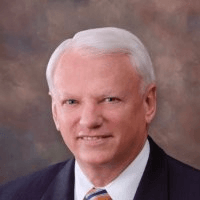On-Premise HR: Interview with George Brady, VP of Sales and Business Development at PDS Software

Introduction to PDS
Give us a brief introduction about your company and your product.
PDS has been around since 1974, and we are only focused on HR solutions: payroll, benefits, recruiting, and time and attendance. We’re a small, privately owned company in Blue Bell, Pennsylvania. Our target market is the 500- to 10,000-employee range. This is in part because of our size: a lot of very large companies do not buy HR / Payroll software solutions from small vendors.
What is the main value proposition for PDS? How do you differentiate from competitors?
We’re still one of the few surviving vendors who offer three different deployments: on-premise, license hosted, and SaaS. Unlike the pure SaaS players, our product is not multi-tenant. Users still get their own system on their own instance, personalized to an individual use case.
In our hosting and SaaS deployments, users connect to the system through a virtual, private network managed by Sprint, not the public cloud. People have become more accustomed to the cloud as time has gone on, but the fact remains that a Sprint-managed VPN is still the safest way to transmit data in our opinion.
We’re one of the few vendors that can truly offer the full core HR suite, along with vendors such as Kronos and Ultimate Software. One customer described us once as “the best-kept secret in HR.” Our growth has been very strong; we’ve had steady growth and steady profitability.
I don’t think we want to be a much bigger company than we are. Our clients feel like they’re a big enough fish in our sea no matter their size. We have an active users group that meets every 18 months, and they actually vote on things they’d like to see in the system. Our good ideas come from our clients, and we believe that the people who use the software are the best people to tell you what it needs.
PDS Customer Base
Tell us a little bit about your customer base and pricing model.
We have approximately 450 organizations that use our software, ranging in size from 135 employees to about 27,000 employees.
Another thing that sets us apart, even within SaaS or PEPM vendors, is the fact that we charge only for active full- and part-time employees. Volunteers, retirees, and seasonal employees do not get counted towards the cost.
With the exception of charging separately for our time and attendance solution, everything is priced together. We private label Vista Time through NetTime Solutions, which is why it is not included in the bundle.
We have found that our clients have no issue with bundling our components because our pricing model is fair. We don’t separately license each component because they are each essential to our overall product experience. For example, we cannot separately license the payroll component from the HR or benefits components because of the way the workflow is built through our system.
The important thing about our HR and payroll solutions is that they transfer very effectively across verticals; the tax tables are the same no matter what business or space a company is in.
PDS Product Strengths: Focus on On-Premise
What are the strengths of PDS? Why have you chosen to focus on on-premise deployments?
One key strength of our product its ability to handle complexity; for example, we have tips processing capability, which not everyone does. We can handle things like mid-pay period pay increases as far as dealing with grades or steps within a pay scale. Additionally, we allow companies to grandfather in and handle multiple benefit plans as another point of complexity.
The vast majority of our customers are on-premise. Even in just the last four or five years, I think that 85% of our new customers have chosen on-premise deployment. For many companies committed to on-premise, we are one of the only viable options.
That being said, there are a lot of reasons to be committed to on-premise, especially for companies that want to have their own system configured to their use. We think that the decision to use on-premise deployment is typically driven by the IT department because of its ease of deployment.
The next biggest segment is the licensed-hosting plan, and we give these customers three instances. They get a production database, a test database, and a training demo database. Most SaaS vendors require the customer to pay for a test database.
We do have a handful of SaaS customers, but we require a three-year minimum term. We believe that SaaS customers sometimes have a renter’s mentality, so for that reason, we focus more on our other offerings.
To share your own user insights about Vista HRMS, write a review on TrustRadius. For more information about use cases, pros, cons, and ROI, find and filter Vista HRMS user reviews here.
Was this helpful?
